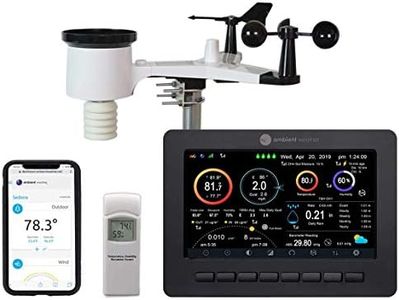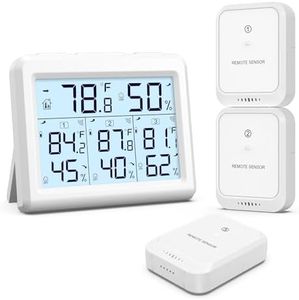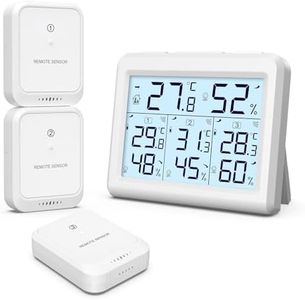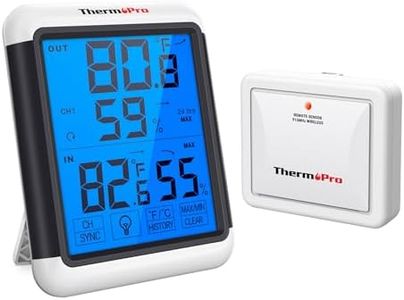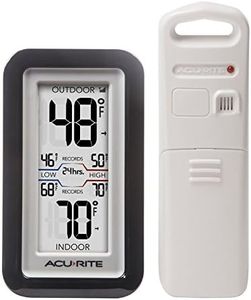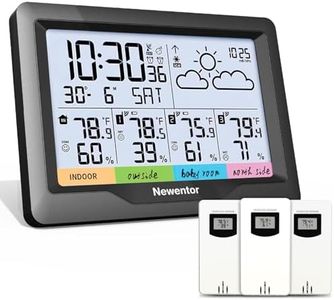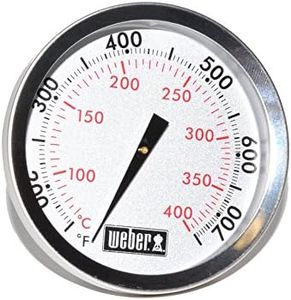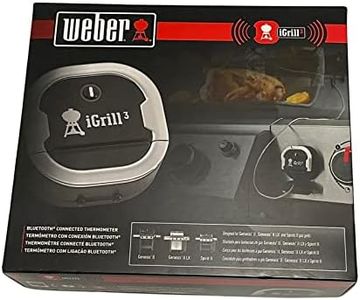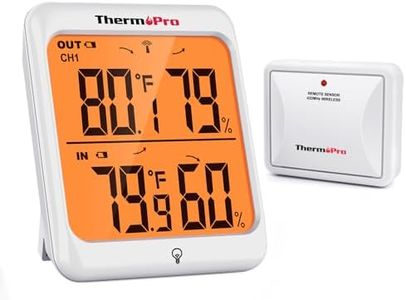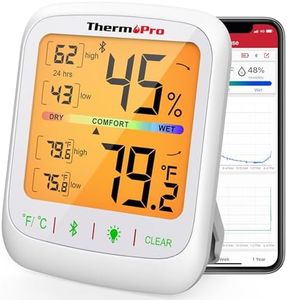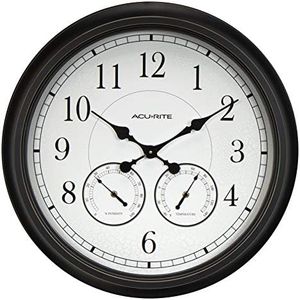We Use CookiesWe use cookies to enhance the security, performance,
functionality and for analytical and promotional activities. By continuing to browse this site you
are agreeing to our privacy policy
10 Best Outdoor Thermometers
From leading brands and best sellers available on the web.Buying Guide for the Best Outdoor Thermometers
Choosing the right outdoor thermometer is all about understanding how and where you plan to use it. Whether you want to keep track of the weather for gardening, planning outdoor activities, or simply for curiosity, it's important to focus on features that match your lifestyle and needs. Consider where you'll place the device, how you'll read the results, and what level of accuracy you require. Thinking about these aspects will help you sort through the options and find an outdoor thermometer that truly fits your situation.Type (Analog vs. Digital)The type of outdoor thermometer determines how you read the temperature. Analog thermometers use a dial or a liquid-filled tube, giving a classic look and typically work without batteries. Digital thermometers provide readings on a screen, often being easier to read and sometimes offering extra features. If you prefer simplicity and tradition, analog models can be appealing, while digital options are best if you like more precise or easily-visible readings. Decide based on your preference for appearance and your need for extra information.
Mounting and PlacementWhere and how you can place the thermometer is very important for getting accurate readings and for convenience. Some outdoor thermometers are designed to mount on walls, fences, or windows, while others come with stakes for placing in the garden. The right mounting option depends on your outdoor space and visibility needs—choose what works best for the spot you will check most often, making sure it's shielded from direct sunlight or other environmental factors that might skew results.
Readability (Display Size and Clarity)Readability refers to how easy it is to see and understand the temperature reading. Some thermometers feature large numbers or even backlit screens for easy viewing from a distance or in low light. If you'll often be reading the thermometer from indoors or across a yard, a larger, high-contrast display can be much easier to use. Pick a model with a display size and clarity suited to where you'll view it most frequently.
Measurement Range and AccuracyThe measurement range is the span of temperatures the thermometer can sense, while accuracy reflects how close its readings are to the true temperature. If you live in an area with very high or low temperatures, look for a wide measurement range. For most daily use, basic accuracy is sufficient, but if you need to track fine temperature changes (for sensitive plants, for example), look for models with a reputation for precision. Consider your climate and how critical exact readings are to your needs.
Weather Resistance and DurabilityOutdoor thermometers are exposed to sun, rain, wind, and sometimes snow, so how well the device stands up to weather is vital. A durable, weather-resistant case ensures your thermometer continues to work and look good over time. If you live in a region with harsh conditions, prioritize models that specify UV resistance, waterproofing, and sturdy construction. Select a thermometer built for the elements you’ll experience most often.
Extra Features (Humidity, Wireless, Alerts)Some outdoor thermometers include additional features like humidity measurement, wireless indoor displays, or adjustable alerts for extreme temperatures. These extras are useful if you enjoy monitoring more detailed weather info or want the convenience of checking the temperature from indoors. Think about whether these features match your lifestyle or are more than you need, and let that guide your decision on choosing a simple or feature-rich model.
